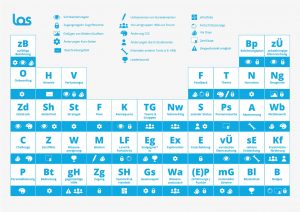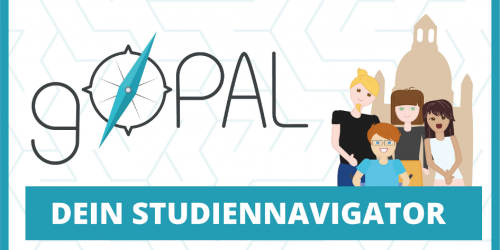Let's go – with Playful OPAL
With the digitalization of education, universities are being asked to provide new teaching and learning formats enriched with digital technologies. Almost all universities in Saxony can rely on a central e-learning infrastructure to support everyday teaching and individual, flexible online studies: the learning management system (LMS) OPAL. But how can OPAL courses be gamified? Playful OPAL can provide a first answer.
In addition to scripts and teaching materials, tasks and tests, online courses can be set up in the LMS OPAL to accompany curricular university events and established as a self-learning opportunity for students. From the learners' point of view, the positive learning experience within such courses plays a crucial role, i.e. learning should be fun and, accompanied by positive emotions, increase motivation to learn. But does the existing infrastructure actually offer any potential for motivationally demanding, digital teaching-learning arrangements - in short, learning experience design?
In the project LOS (Learning Experience in OPAL through Sgame elements), gamification and the integration of game strategies and elements are seen as a way of keeping the target group (students) motivated to learn constantly during digital learning. The developed concept "Playful OPAL" supports university lecturers in gamifying their own teaching and learning arrangements in the LMS OPAL with relatively little effort. It shows how game elements, e.g. storytelling, reward systems, quizzes or competitions, offer a wide range of didactic possibilities for designing teaching and learning offers creatively and in a way that is appropriate for the target group, and which functions within the LMS OPAL can be used for this purpose.

The concept “Playful OPAL” was developed based on Andrej Marczewski’s “Periodic Table of Gamification Elements” designed that describes game elements and strategies for different types of players. In Playful OPAL, the gamification periodic table was applied to the LMS OPAL and the individual elements were checked for their feasibility. Together with the e-learning support of the TU Dresden, elements were also identified whose applicability is not feasible, such as elements based on the properties of a social network.
The remaining elements were transferred from the game design context to teaching-learning contexts and applied to the perspective of teachers/game instructors and learners/players. This two-sided approach explains to university lecturers on the one hand which teaching logic is reflected in the respective element, and on the other hand why this is important for learners, i.e. which learning motivation and learning experience lies behind it. This holistic picture should enable teachers to adapt it to their own teaching scenario with as little effort as possible and thus effectively gamify their own OPAL course. For each element, the functions/course modules with which it can be implemented in OPAL were also specified.
This information is clearly bundled in a kind of manual and also made available to members of Saxon universities as profiles in the open OPAL course "SpielWiese 4 Game-Based Learning". Authors of digital teaching and learning offers are thus given practical options to familiarize themselves with the design of game-based teaching and learning formats on the one hand and to use them individually for their own purposes on the other.
The aim is to increase the quality of digital teaching and learning scenarios in the long term and thus also support a similarly positive effect on student motivation and their learning experience.






